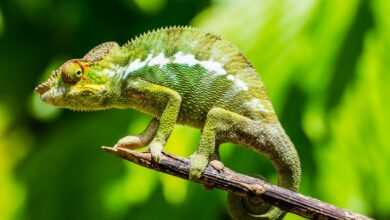Alligators tongue and taste buds Fact
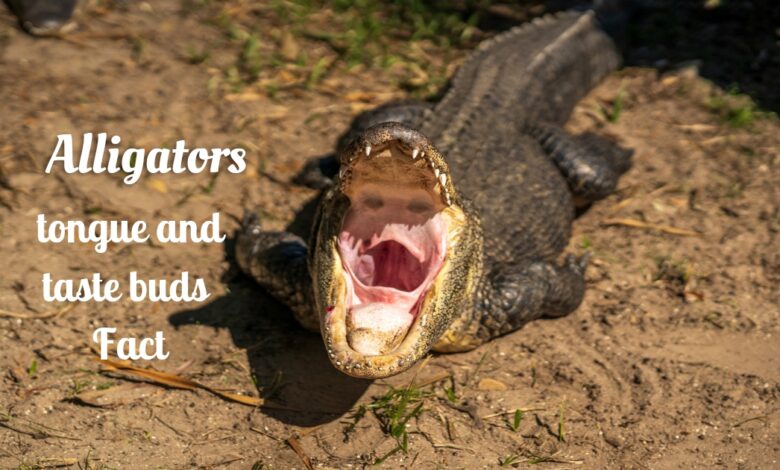
Alligators tongue and taste buds Fact
Renowned for their imposing size, formidable tails, and formidable teeth, alligators stand as captivating creatures in the wild. Among their remarkable features, their tongues hold a significant role, housing taste buds on the upper palate.
These taste buds serve a crucial function, allowing alligators to discern the suitability of their prey before indulging in a hunt, ensuring they select only the most palatable.
Alligators and Their Unique Tongue
Contrary to common belief, alligators cannot stick out their tongues in the conventional sense. However, they possess a remarkable ability to maneuver their tongues, creating a seal underwater. This adaptation enables them to open their formidable mouths beneath the surface without inhaling water.
Given that alligators need to avoid water entering their lungs, this specialized tongue movement serves as a crucial mechanism. By tightly sealing the valve, alligators can swiftly snap their mouths open and closed while ambushing prey underwater.
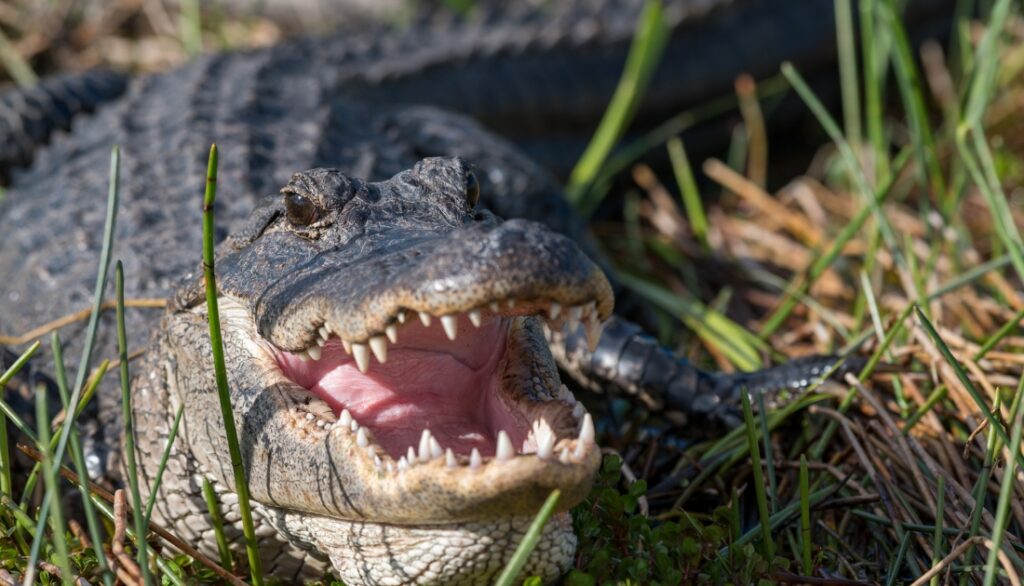
Alligator Hunting Tactics
Alligators employ a multifaceted approach beyond their taste buds and tongues when hunting for prey. Preferring the cover of darkness, they leverage the night to blend seamlessly into the water.
Their hunting strategy involves a slow, stealthy stalking of prey before executing a swift strike. On land, alligators seize their prey, dragging it beneath the water to drown and incapacitate it.
Similar to their crocodile counterparts, alligators exhibit opportunistic behavior. They patiently wait for prey to approach the water’s edge. When, for instance, a deer or other sizable prey is quenching its thirst, alligators strike with speed and precision, embodying the essence of ambush predators.
See Also: 7 most dangerous reptile in Texas
Crocodile Tongue and Taste Sensation
Much like alligators, crocodiles boast tongues that play a pivotal role, although alligators tend to have larger tongues functioning in a similar manner. Crocodiles feature a membrane that secures their tongue to the roof of their mouths.
Given their extensive time underwater, crocodile tongues serve a crucial function by safeguarding their airways against both saltwater and freshwater. Interestingly, crocodiles don’t actively employ their tongues during feeding or digestion.
Crocodiles possess taste buds not only on their tongues but also on the palate and pharyngeal walls. This keen sense of taste complements their remarkable hunting prowess, as crocodiles utilize various senses to track and efficiently strike down larger prey.
Alligator Digestive System Insights
Alligators exhibit a unique digestive system that involves a strategic pause between meals for proper digestion.
Alligators tongue and taste buds Fact

Feasting on sizable prey, alligators employ a fascinating mechanism where they redirect blood away from the lungs to their stomachs. This blood infusion aids in the heightened production of gastric acid, facilitating efficient digestion.
While adept at digesting meat, these large reptiles encounter challenges with non-meat items like debris, branches, and wood, which resist digestion and can accumulate in their stomachs. In an intriguing discovery, a scientist even stumbled upon a 15-inch piece of cypress lodged in an alligator’s stomach.
Adding to their digestive peculiarities, both alligators and crocodiles incorporate grit and rocks into their diet, a practice thought to assist in the digestion process. This behavior sheds light on why an industrious gator might ingest seemingly unconventional items, including artifacts.
Difference between Alligators and crocodiles
The primary differences between alligators and crocodiles lie in their physical characteristics, behavior, and habitat.
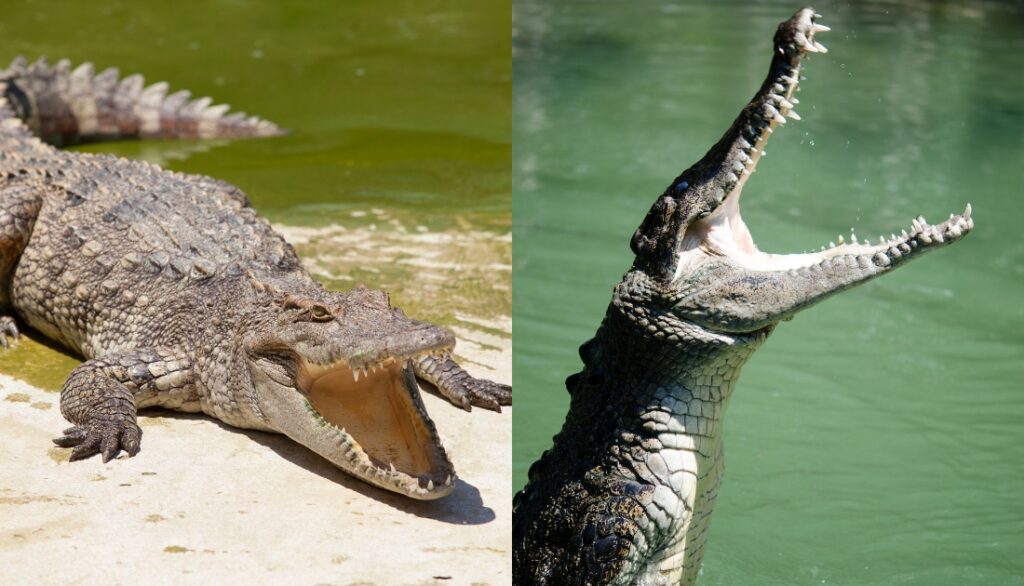
Snout Shape
Alligators: Have a U-shaped, broader snout.
Crocodiles: Feature a V-shaped, narrower snout.
Teeth
Alligators: Possess teeth that are more hidden when their mouths are closed.
Crocodiles: Exhibit teeth that are often visible even when their mouths are shut.
Habitat
Alligators: Prefer freshwater habitats like swamps, lakes, and rivers.
Crocodiles: Tend to inhabit a broader range of environments, including saltwater estuaries.
Geographical Distribution
Alligators: Predominantly found in the United States and China.
Crocodiles: Have a more global distribution, present in Africa, Australia, Southeast Asia, and the Americas.
Behavior
Alligators: Generally considered less aggressive and more tolerant of other alligators.
Crocodiles: Often perceived as more aggressive and territorial, with a higher likelihood of engaging in aggressive encounters.
Salt Glands
Alligators: Lack specialized salt glands, making them primarily freshwater inhabitants.
Crocodiles: Possess salt glands, allowing them to tolerate saltwater and inhabit both freshwater and saltwater environments.
Types of Alligator
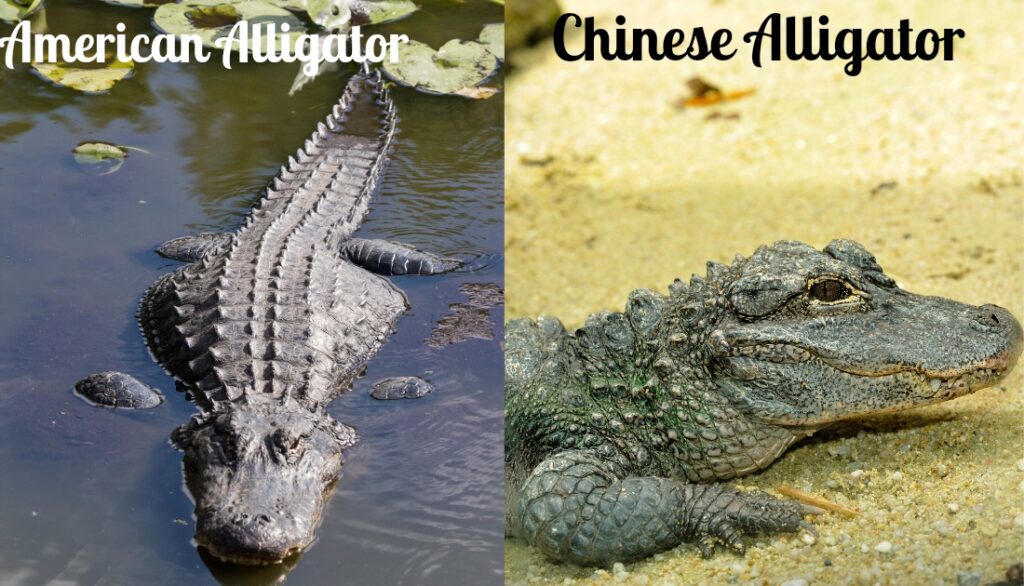
American Alligator (Alligator mississippiensis)
Distribution: Found primarily in the southeastern United States, including states like Florida, Louisiana, Georgia, Alabama, and Mississippi.
Size: Adults can reach lengths of up to 13 to 15 feet.
Habitat: Inhabit freshwater environments such as swamps, marshes, rivers, and lakes.
Chinese Alligator (Alligator sinensis)
Distribution: Native to eastern China, particularly in the Yangtze River basin.
Size: Smaller compared to the American alligator, with adult lengths typically ranging from 5 to 7 feet.
Habitat: Primarily found in slow-moving freshwater habitats, including ponds, marshes, and lakes.




